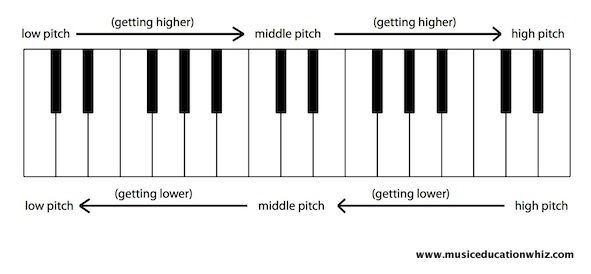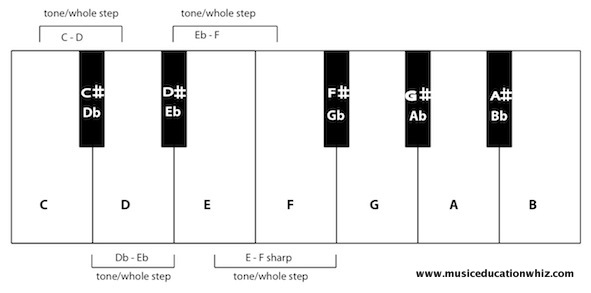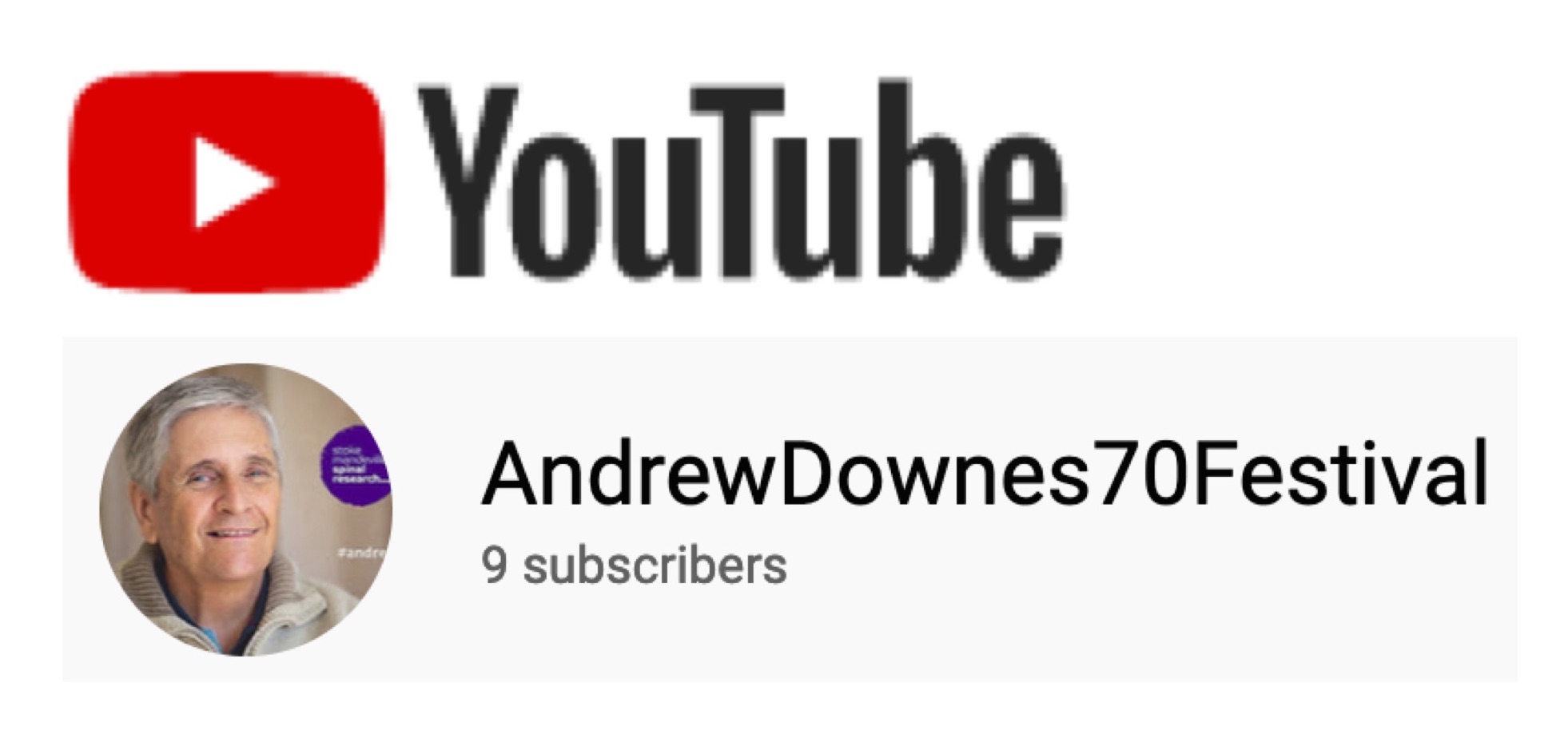Back to andrewdownes.com

Music Education
Resources by Paula Downes, a lot of music by Andrew Downes
Pitch
Download:
- Keyboard Worksheet
- Pitch Notation Worksheet (treble & bass clefs)
- Pitch Notation Worksheet 2 (alto & tenor clefs)
- Sharps, Flats & Ledger Lines Worksheet
On this page:
Introduction
Learning about the Keyboard and Training your Ears!
Pitch Notation
Transposition
The following section of the website will use diagrams of the keyboard as well as free video demonstrations designed to help you to get used to the sounds and to train your musical ear.
You will then learn about notation and transposition. Teachers can present all this information on their interactive whiteboards, or pupils can go to a computer and visit this website as an extension activity. Downloadable worksheets (coming soon) will help to consolidate your knowledge.
Return to the top of the page
Learning about the Keyboard and Training your Ears!
Download:
- Keyboard Worksheet
- Pitch Notation Worksheet (treble & bass clefs)
- Pitch Notation Worksheet 2 (alto & tenor clefs)
- Sharps, Flats & Ledger Lines Worksheet
In Western Classical Music, since the time of JS Bach, pitch has been divided into equally spaced semitones or half steps. The easiest way to understand these semitone/half step intervals is to see them on a keyboard. (An interval is the distance between two notes.)
The notes on the keyboard go from low to high as you go from left to right.
Notice that there are alternating groups of two black notes and three black notes all along the keyboard:
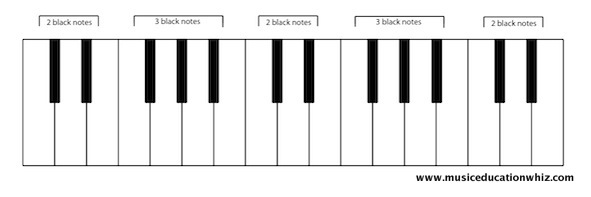
The distance between any note and its next-door neighbour is called a semitone (UK) or a half step (USA):

We label all the white notes on a keyboard
with the first seven letters of the alphabet: A-G.

C is always to the left of the two black keys; D is always between the two black keys; E is always to the right of the two black keys; F is always to the left of the three black keys; G is always between the first two of the three black keys; A is always between the last two of the three black keys; B is always to the right of the three black keys.
The distance from a letter to the next same
letter is called an octave:
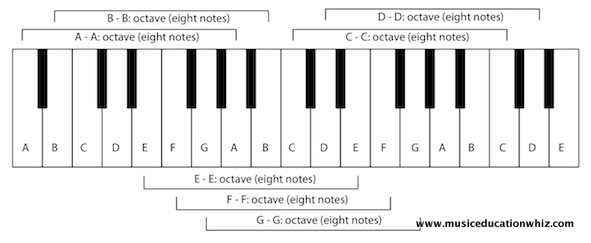
The black keys have two names each:

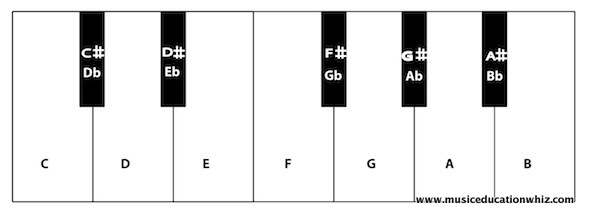
So C sharp is a semitone/half step higher than C; Db is a semitone/half step lower than D.
The
interval of a tone or whole step is two semitones/half steps.
Download:
- Keyboard Worksheet
- Pitch Notation Worksheet (treble & bass clefs)
- Pitch Notation Worksheet 2 (alto & tenor clefs)
- Sharps, Flats & Ledger Lines Worksheet
Return to the top of the page
Pitch Notation
Stave/Staff
To write music down, we use this five-lined stave/staff:

We can put notes on the lines and on the
spaces:

Clefs
We then need a clef to tell us whether we
are playing high notes or low notes.
The treble clef is used for high
instruments, for example the violin, flute, clarinet, oboe, the right hand on
the piano. The treble clef started out life as a 'G clef', meaning that the curl in the middle started on the line that was the note G. The 'G clef' could be anywhere on the stave, but towards the end of JS Bach's life, when the development of music printing made it more convenient to use fewer clefs, only the treble clef was used.

Here are the notes on the treble clef stave with a picture of a keyboard underneath to show how the notes on the stave relate to those on the keyboard. Notice the labelling of Middle C on the keyboard - this is the C in the middle of the piano.
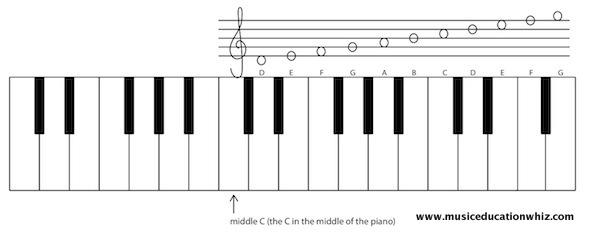
The following words can be helpful for
remembering the notes on the treble clef staves:
Line notes

Space notes

The bass clef is used for low instruments, for example the cello, tuba, double bass, bassoon and left hand of the piano. The bass clef started out life as an 'F clef', meaning that the beginning of the curl at the top was on the note F and the two dots surround the note F. With the development of music printing, only the bass clef as we know it, with F on the second line down, survived.

Here are the notes on the bass clef stave with a picture of a keyboard underneath to show how the notes on the stave relate to those on the keyboard.
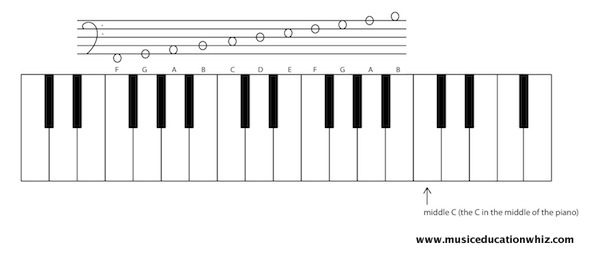
The following words can be helpful for remembering the notes on the bass clef staves:
Line notes

Space notes
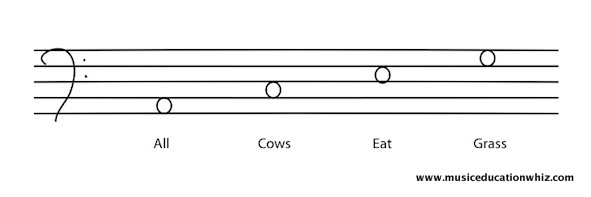
The alto clef is used for the viola, since
the viola uses mid-range pitches. This
allows more notes to lie on the lines of the stave, making the music easier to
read. The alto clef started out life as a 'C' clef. Middle C is always where the two bumps join. We now only use the 'alto clef' and the 'tenor clef'. Middle C is on the middle line of the alto clef stave.
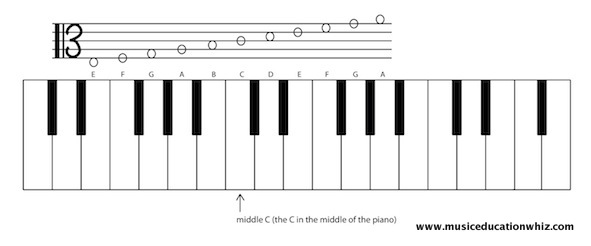
The tenor clef is used for high notes on low
instruments such as the cello, bassoon, trombone and euphonium. This allows more notes to lie on the lines of
the stave, making the music easier to read:
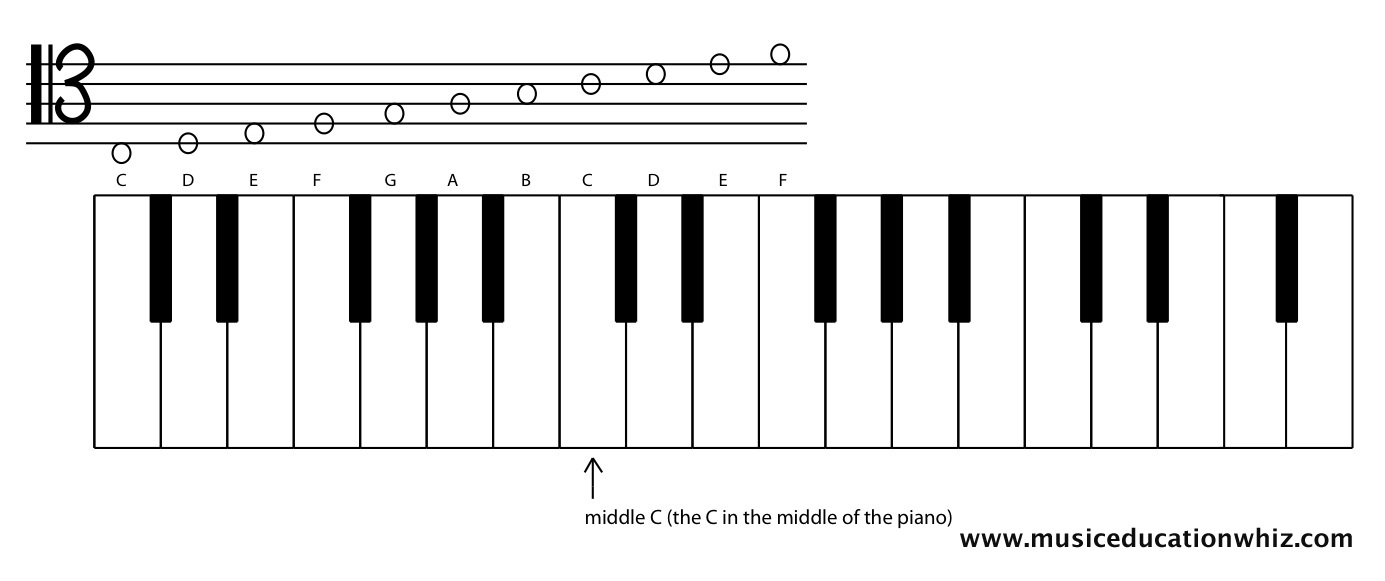
Sharps and flats
Sharps and flats are written before the
notes on the stave. The head of the flat
is on the same line or space as the note:
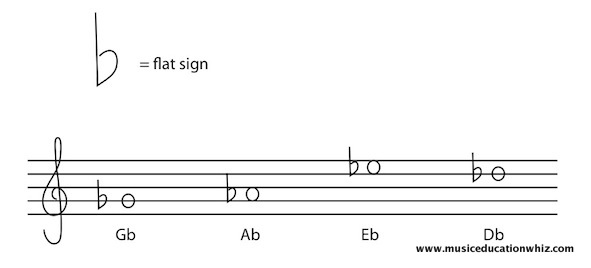
The diagonal lines of the sharp cross the lines or spaces surrounding the line or space that the note is on:
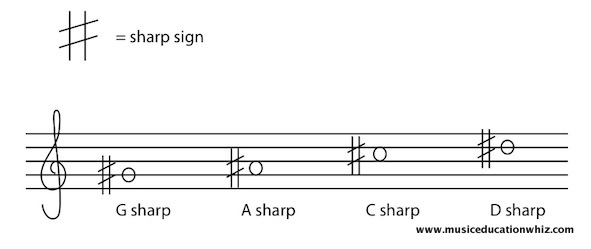
Ledger Lines
If the pitch is higher or lower than the
notes on the stave, we use ledger lines to add extra notes above and below the
staves:
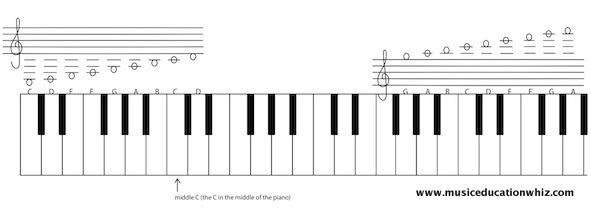
Download:
- Keyboard Worksheet
- Pitch Notation Worksheet (treble & bass clefs)
- Pitch Notation Worksheet 2 (alto & tenor clefs)
- Sharps, Flats & Ledger Lines Worksheet
Return to the top of the page
Transposition
Some instruments known as transposing instruments have music written out at
a different pitch from the sound that comes out. This happens for the following reasons:
Woodwind instruments’ transposition is based on the pitch of the note produced when all fingers are down, in other words, on the length of the tube. This note is always written as a C, no matter what the pitch of the sound of the note is. On a clarinet in Bb, for example, this note is Bb. This note is written as a C and all the rest of the music is also written out a tone/whole step higher. On a saxophone in Eb, this note is Eb, so all the music is written a minor 3rd lower.
Brass instruments' transposition is similarly based on the fundamental note produced when no valves are engaged. A horn in F plays the fundamental note F when no valves are engaged, so the music has to be written out a fifth higher.
Some instruments are transposed an octave up or down, because they are so high or low, their music would be full of ledger lines and therefore difficult to read. A Double Bass player will read their music in the bass clef, but the sound they produce is an octave lower. A tenor singer will read their music in the treble clef, but the sound they produce is an octave lower. A piccolo will read their music in the treble clef, but the sound they produce will be an octave higher.
Other instruments can have sections of their music transposed down or up an octave to make it easier to read. To show that it should be up or down an octave, the number 8 followed be a dashed line is written above the music to indicate that the player should play an octave higher, or below the music to indicate that the player should play an octave lower.
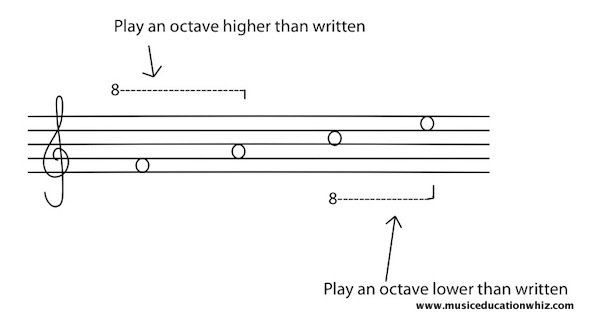
Return to the top of the page
Home>Music Theory>Pitch

Music Education
Resources by Paula Downes, a lot of music by Andrew Downes
Back to andrewdownes.com
Follow Cynthia Downes on Instagram to keep up-to-date with her blog posts.
If you have performed in any of Andrew Downes' works or come to listen, please share your experiences in the Premieres Blog! Also see what others have said. Thank you so much for your contribution.
